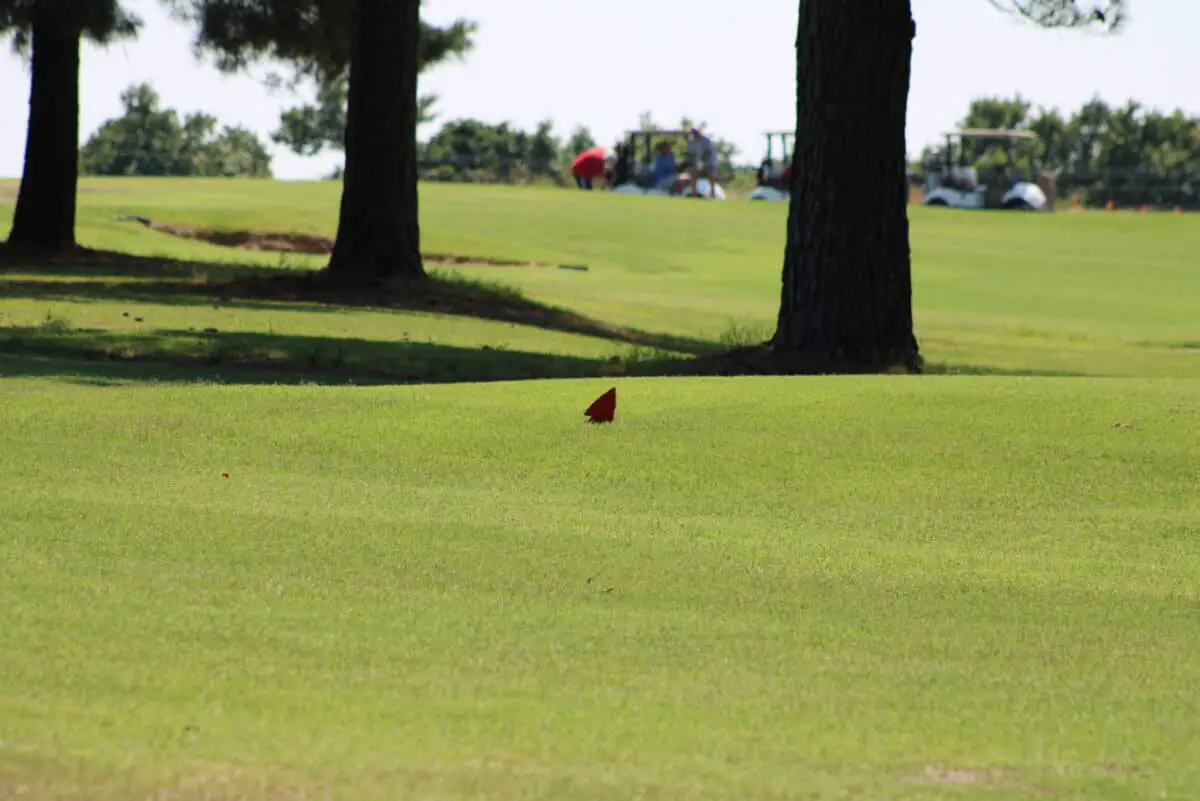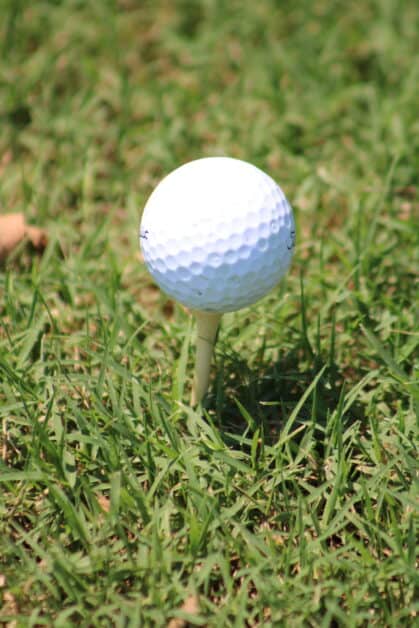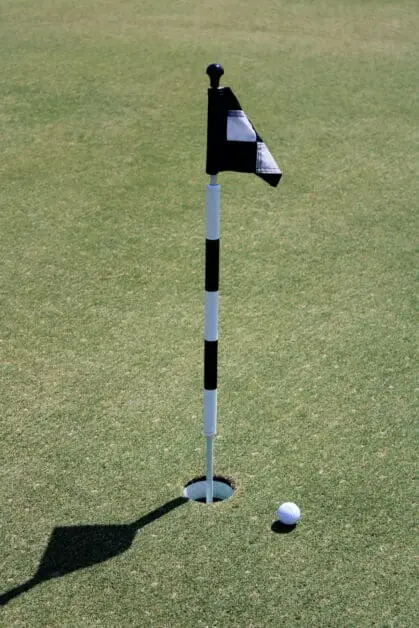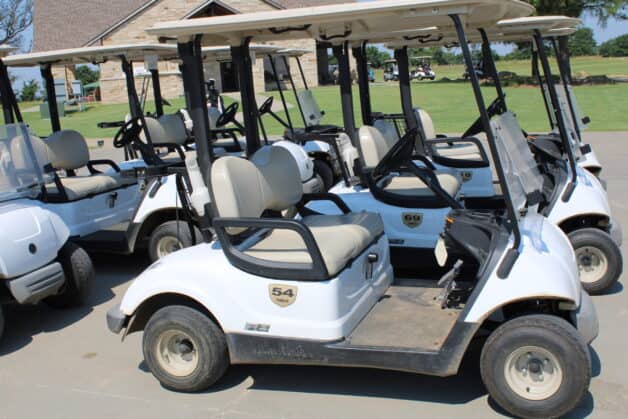While some would suggest otherwise, you should tee up on par 3!
Teeing up on par 3 can increase your chances of delivering a sweeping swing. Not only that, but it eliminates the possibility of hitting a golf ball thin or fat.
There’s a reason why most people starting golf learn to hit from a tee. It’s much easier than hitting a golf ball off the ground. Hitting a teed up golf ball gives you a bit of wiggle room.
In addition, teeing up doesn’t just concern novice golfers; even pro golfers will take the opportunity to tee up on par 3.
In this article, we’ll dive deep into the reason you should tee up on par 3. We’ll also take a look at what tee height gives you higher chances of a clean shot. What’s more, we have a few tips on how to make the most out of a tee up shot on par 3.
Why You Should Tee Up on Par 3
Simply, teeing up makes it easier to hit a shot. That’s why if you have the chance to tee up, you should take it, especially when that chance is on par 3.
On equal footing, par 3 is probably the most difficult golf hole. As a result, almost all novice and pro golfers choose to tee up on par 3. It’s why you should, too.
Teeing up on par 3 increases your chances of hitting a good shot even if the swing hits too early or late.
When you tee up, you’re preventing any grass or morning dew from coming between the club and the ball. This gives you more control over the distance and direction the ball will travel.
When something gets between the club and the ball, it decreases the ball’s backspin. This makes it behave unpredictably.
Perhaps no one provides an answer better than the golf instructor, Jim Flick, and professional golfer, Jack Nicklaus. In a conversation between the two on GolfDigest, Nicklaus recommended teeing up on par 3.
If you hit a par 3 shot off the ground, you might hit it thin or fat. When you tee up on par 3, you leave nothing to chance. Teeing up on par 3 can help you make a clean sweeping shot.
For pro golfers, it might be interesting to hit a ball off the ground on par 3. However, aside from giving themselves a little bit of challenge, pro golfers almost always tee up on par 3. They find no reason to give up the consistency and accuracy a tee up provides for their par 3 shots.
What Is the Optimal Tee Height on Par 3?
On par 3, the optimal tee height is usually somewhere between 20 and 30mm off the grass. These heights can change a little depending on your swing. For that reason, make sure you find the right height for you.
While some recommend hitting off the ground on par 3s, it’s much more preferable to tee up. According to the renowned golf coach, Dave Pelz, hitting off the ground “reduces the amount of backspin you’re able to put on the ball.”
When you hit off the ground, the ball isn’t the only thing that comes in contact with the club; every blade of grass can stand between your club and the ball, which can impact your accuracy.
To hit the best, most controlled shot possible, you should tee up the ball a little. This way, nothing stands between the club and ball, allowing you to get the nicest, cleanest shot possible.
In general, teeing up high or low has a great impact on the height and spin of the golf ball. That’s why teeing up can make or break your shot. Choosing whether to tee up higher or lower depends entirely on the club and playing conditions.
How to Make the Most of a Tee Up Shot on Par 3?
The first thing you should do is to make sure that you don’t press the tee all the way into the ground. The point of using a tee is that it gives you the chance to tee up the golf ball a little higher.
Next, consider which club you’ll be using for this shot. The golf club you’ll be using affects the height of the tee. This is due to the fact that each golf club changes the ball position in relation to your stance. It also has an impact on which part of your swing hits the ball.
The ball position with an iron or a hybrid golf club is in the center of your stance. You’ll be hitting the ball near the lowest part of your swing. For that, you want to set the tee at a low height. This should allow you to achieve a downward sweeping swing.
For a driver or fairway wood golf club, the position of the ball is at the front of your stance. The club makes contact with the ball on the upswing. That’s why your tee height should be higher, giving you a much more effective upswing sweeping shot.
Then, check the wind. In calm conditions, golf instructor Jim Flick recommends curving the ball. This makes the wind act as a buffer, which allows the ball to drop softly. When it’s windy, your chances are better with a fade.
In Conclusion
Par 3 holes are probably some of the most enjoyable and exciting holes to play. For both novice and pro golfers, par 3 holes allow them to improve their swing and drives. What’s more, par 3s are great for practicing pressuring situations.
It doesn’t matter whether you’re playing on a par 3 golf course or a standard one. Teeing up on par 3 holes can increase your chances of hitting a good shot. Even the most established golfers take the advantage of teeing up on par 3.
To get the most out of teeing up on a par 3, you must first determine the ideal tee height for your swing. You can do that by experimenting with different tee heights.
- Should Tee Boxes Be Level? - January 23, 2024
- 3 Hybrid Distance - November 15, 2023
- Innovations in Golf Mobility: An In-depth Review of Top Golf Scooters - October 12, 2023



